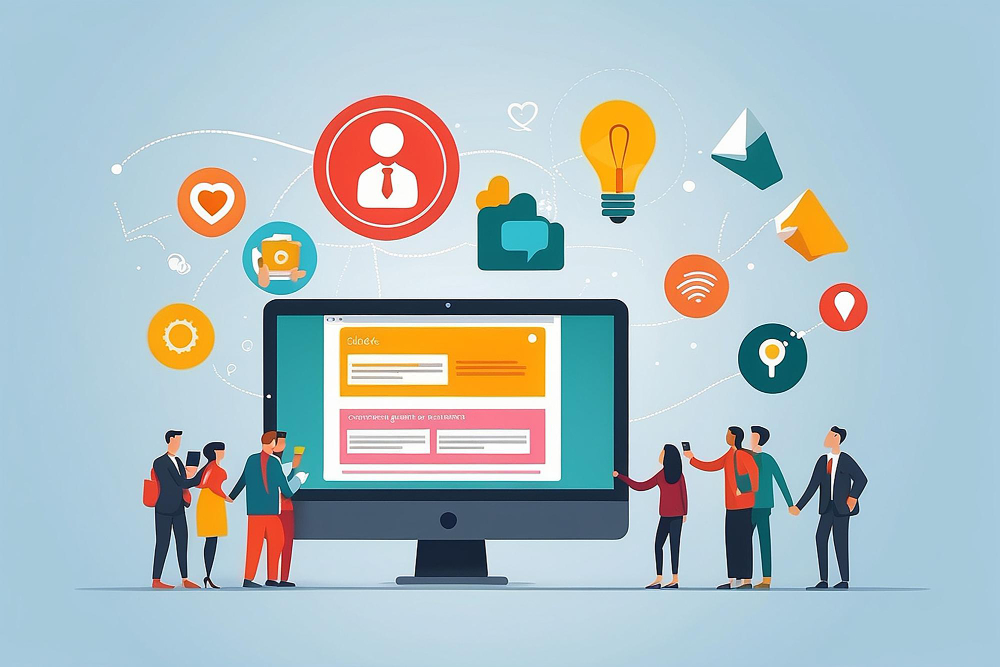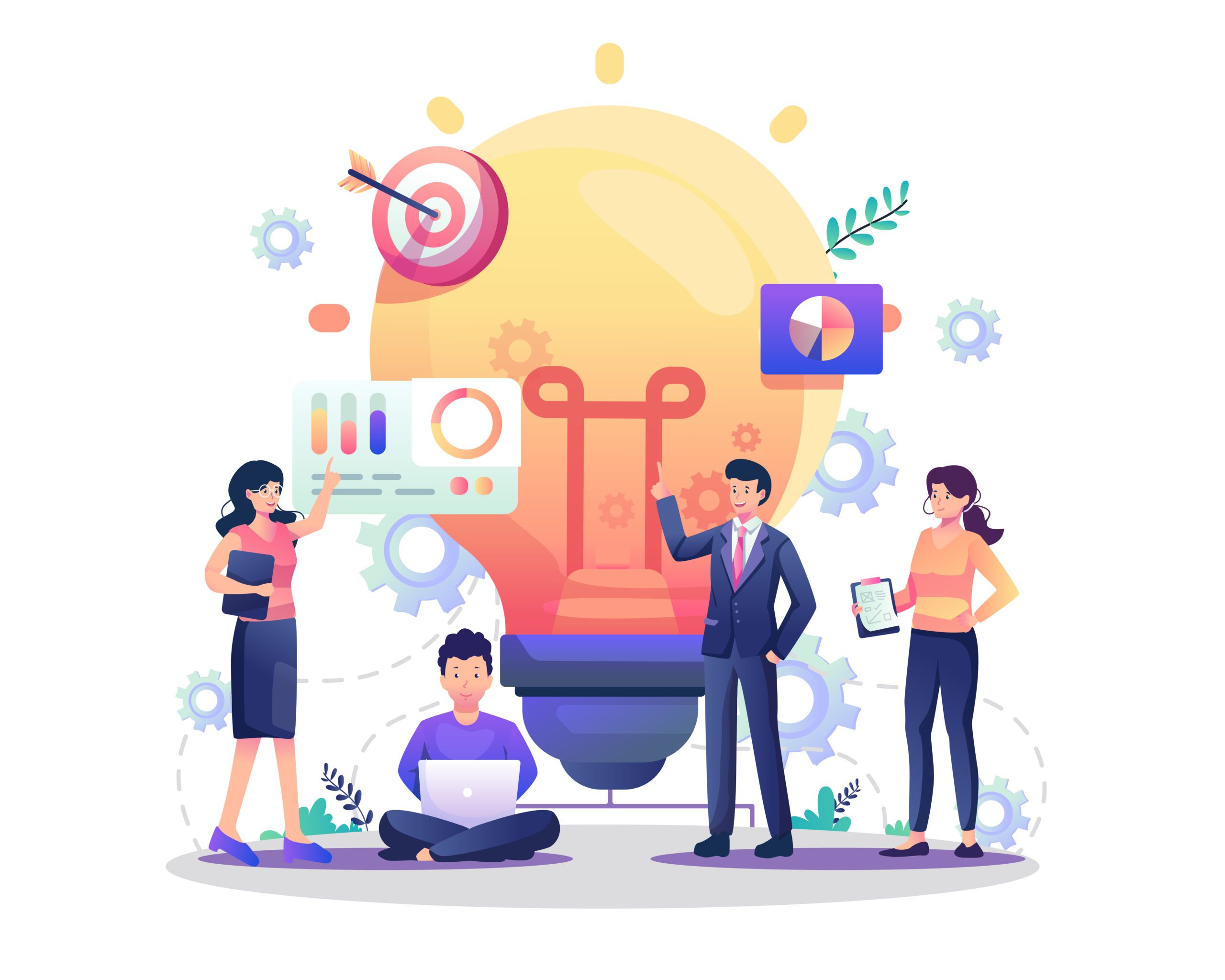B2B marketing is about creating quality leads, which are the stepping stones to growth and business success. The B2B lead generation process, therefore, needs a clear content strategy that is, the action or process of creating and distributing valuable, relevant, and consistent content to attract and retain a clearly defined audience. A sound B2B lead generation content strategy should enable you to turn prospects into loyal customers through a proper understanding of your target market, clear objectives, and different formats and channels of content. The key ingredients need to be put in place for designing a B2B lead generation content strategy, and in this guide, we take a deeper look into them.
Importance Of B2B Lead Generation Content Strategy
Business success depends on proper B2B lead generation content strategy. In this way, setting up a mechanism for developing and distributing valuable, relevant, and consistent content for the attraction and engagement of an identified audience will strongly go toward not only proper lead generation but also the establishment of authority and the building of trust and relationships with potential clients.
Overview Of B2B Lead Generation Content Strategy
A B2B Lead Generation Content Strategy covers a few essential points: know your audience, create focused content, determine the best distribution channels, use search engine optimization, use marketing automation, and finally, analyze and optimize after completion. Very important in and of itself, each of the above elements guarantees that with these components in place, your content attracts and converts leads.
Understanding Your Target Audience For B2B Lead Generation Content Strategy

- Identifying Ideal Customer Profiles (ICPs): An ICP is simply a detailed description of the type of company that your product or service will benefit the most. Establishing your ICP is all about understanding your ideal customer by studying your best customers and what makes them so.
- Buyer Personas: Detailed buyer personas are semi-fictitious representations of your ideal customers based on market research and accurate data about your existing customers. A buyer persona generally consists of demographic information, behavioral patterns, motivation, and goals, among others. The essence of such detailed buyer personas is to help you create content according to the many different needs of audience segments.
- Identify Customer Pain Points And Needs: Relate your content to the pain points or needs identified within your target audience. Run surveys and interviews, and research the market to discover the challenges and problems that may be bothering your potential customers. Addressing these pain points with your content can further help position yourself as a solution provider.
Setting Clear Goals and Objectives For B2B Lead Generation Content Strategy
- Success Metrics: Set clear success metrics to measure the efficiency of a B2B lead generation content strategy. These could be about the number of generated leads, conversion rates, traffic on your website, and engagement rates, among others.
- Align a Content Strategy With Your Sales Goals: Build a proper b2b lead generation content strategy that dovetails with your overall sales objectives. It should be built to support the buyer’s journey, starting from awareness to consideration up to the decision. An example can be from blog posts about education in the awareness stage to detailed case studies in the consideration stage and product demos in the decision stage.
- Short-term vs Long-term Goals: Place your short and long-term goals in your content strategy. Short-term goals may be like increasing website traffic or engaging more in social media, while long-term ones can be about developing brand authority or receiving qualified leads.
Content Creation Strategy
Types of Content for B2B Lead Generation
- Blog Posts: Other than that, blog posts will not serve your audience with loads of important information but help in settling the credibility and betterment of SEO ranking for your site. Keeping in line with this notion, the creation of relevant, high-quality blogs posted across regular intervals helps drive traffic to your website and creates leads.
- Whitepapers and eBooks: Whitepapers and eBooks are equally detailed, proper reports on topics carefully chosen to fall within your industry’s relevance. In addition, they can be gated once more behind a lead-catching form, so rest assured that they will remain good lead-generation tools.
- Case Studies: Case studies won’t just highlight your success stories but also explicitly show how your product or service has benefited other businesses. They’re in-depth social proof and might do wonders within the “consideration” stages of a buyer’s journey.
- Webinars and Videos: Formats like webinars and videos are all engaging means that have taught otherwise complex, overwhelming information in very simple formats. You could use it also to really demonstrate your skill and personal touch with the audience.
- Infographics: Info-graphic literalized information in a visual way, sharing complex information in data chunks easily digested by readers. It is highly shareable and drives traffic to your website.

Content Formats and Their Effectiveness
Different formats also serve another function: they could also serve better at some point within the buyer’s journey. For example, blog posts and infographics attract top-funnel leads, while case studies and webinars work better with middle- and bottom-funnel leads.
Coming Up with a Content Calendar
A content calendar helps you plan and organize your content efforts. It helps ensure you can sustain regular, quality content publication; it can help you align your content efforts with critical dates, events, or campaigns. It is an adequately planned calendar for content—content types, dates of publication, and channels for distribution.
Content Distribution Channels
- Owned Media (Website, Blog): Owned media is another name for the channels a company owns. It could be a website or a blog. These channels are for publishing content. Ensure your website is optimized for conversion to make a visitor a lead.
- Earned Media (PR, Guest Posts): Earned media includes industry publications, coverage, guest posts on authoritative blogs, and mentions across social media. These channels might help you boost your reach a bit and maybe lend you some much-needed credibility.
- Paid Media: Paid media refers to all channels where one pays in order to promote their content. This can be attained through pay-per-click, social media ads, and even sponsored content. Paid media is perfect in those situations where you have to expose your brand to the masses and immediately start pulling in leads.
- Social media networks: All media platforms are great for distributing content, engaging in conversations, and driving your audience to your site. And, of course, LinkedIn, Twitter, and Facebook are great for B2B.
- Email Marketing: Email marketing is powerfully improving the conversion process of a nurturing lead. Have a segmented email list for targeted, personalized information that will send the leads through the sales funnel.
SEO and Keyword Strategy
-
The Importance of SEO in B2B Lead Generation
The most relevant SEO strategy is to be sure your content hits top-ranking positions in the SERP so that many potential leads can easily find you. Proper SEO can direct organic traffic to your website and drive and generate leads.
-
B2B Keyword Research
Keyword research is to identify the key terms and phrases your audience uses in their search for information about your space. You then optimize that those terms are well placed in your content to pull traffic from organic search engines.
-
On-page and Off-page SEO Techniques
On-page SEO involves the optimization of each website page to rank higher for attracting relevant traffic. It requires content, as well as optimization of meta tags, headers, and images. Off-page SEO includes activity taken off the website that will have a ranking effect. These aspects involve building backlinks and social media marketing.
-
Using the Seo Tools
The tools may also range help in keyword research, competitor analysis, rank tracking, and content optimization against the multiple needs of an SEO. Tools like Google Analytics, SEMrush, and Ahrefs bring in such insights, which further help fine-tune an SEO strategy.
Leveraging Marketing Automation Tools
-
Marketing Automation Benefits
Marketing automation tools streamline marketing operations, which helps you save time and resources—thereby increasing efficiency in business processes. They help in email campaigns, lead nurturing processes, social media posting, and many other campaigns.
-
Top Marketing Automation Tools
A few of the renowned marketing automation tools include: HubSpot, Marketo, Pardot, and Mailchimp. These tools help automate routine jobs, segment your audience, and personalize your content.
-
Automating Your Content Strategy
When devising a content strategy, integrated marketing automation will ensure that the right content is passed to the right person at the right time. This can give you opportunities for personalized email campaigns, automated follow-up, and targeted content delivery to increase effective targeted lead generation.
Analyzing and Optimizing Your B2B Lead Generation Content Strategy

-
Metrics to watch
Effectiveness in measuring b2b lead generation content strategy may be achieved through the site’s statistics, number of leads generated, conversions, engagement rate, and more. Such statistics can show what is being done right or what can be changed.
-
Analyzing performance
Regularly monitor the reactions to the content of the audience; this way, it is possible to understand what content works and what doesn’t, with what channels of distribution, and where there are opportunities for improvements.
-
A/B testing and iteration
In other words, A/B testing is creating two different versions of content and assessing the performance of each to determine the one that works better. This might emerge from the testing of email subject lines, landing pages, call-to-action buttons, and so on. Use the results to iterate on how to optimize your content strategy.
-
Strategy based on data insights
Use your data insight to craft your b2b lead generation content strategy. Keep an eye on the performance data pick trends and use this in identifying the best decisions that can help refine your approach.
Case Studies and Examples
Success Of B2B Lead Generation Content Strategy
It might be a great idea to break down some of the top B2B lead generation content strategy that work. For example, take companies like LeadFoxy, HubSpot or Salesforce, for whom the focus on content has been a powerhouse in terms of lead gen. They make available resources, educational content, and engaging multimedia.
Things We Can Learn From the World Most Successful B2B Businesses
The most successful B2B companies have figured out: audience understanding, content quality, multiple distribution channels, and relentless strategy analysis and optimization pay off. Learn from their experiences to help in refining your content strategy.
Conclusion
Effective B2B lead generation content strategy helps to gain audience understanding, setting clear objectives, and focusing on how the content will be distributed; optimization for SEO; and employing marketing automation, followed by a continuous effort of analysis and optimization.
Here are other trends to watch out for in the future of the B2B lead generation content strategy like the use of AI and machine learning is amplified in a bid to increase personalization, a far more interactive and immersive manner of content presentation, and a turn towards data-driven decision-making.
A well-executed B2B Lead Generation Content Strategy will impact business success by attracting and converting qualified leads through an understanding of the audience, creating valuable content, and the ongoing optimization of efforts. Run your lead generation engine to grow and succeed continuously.




